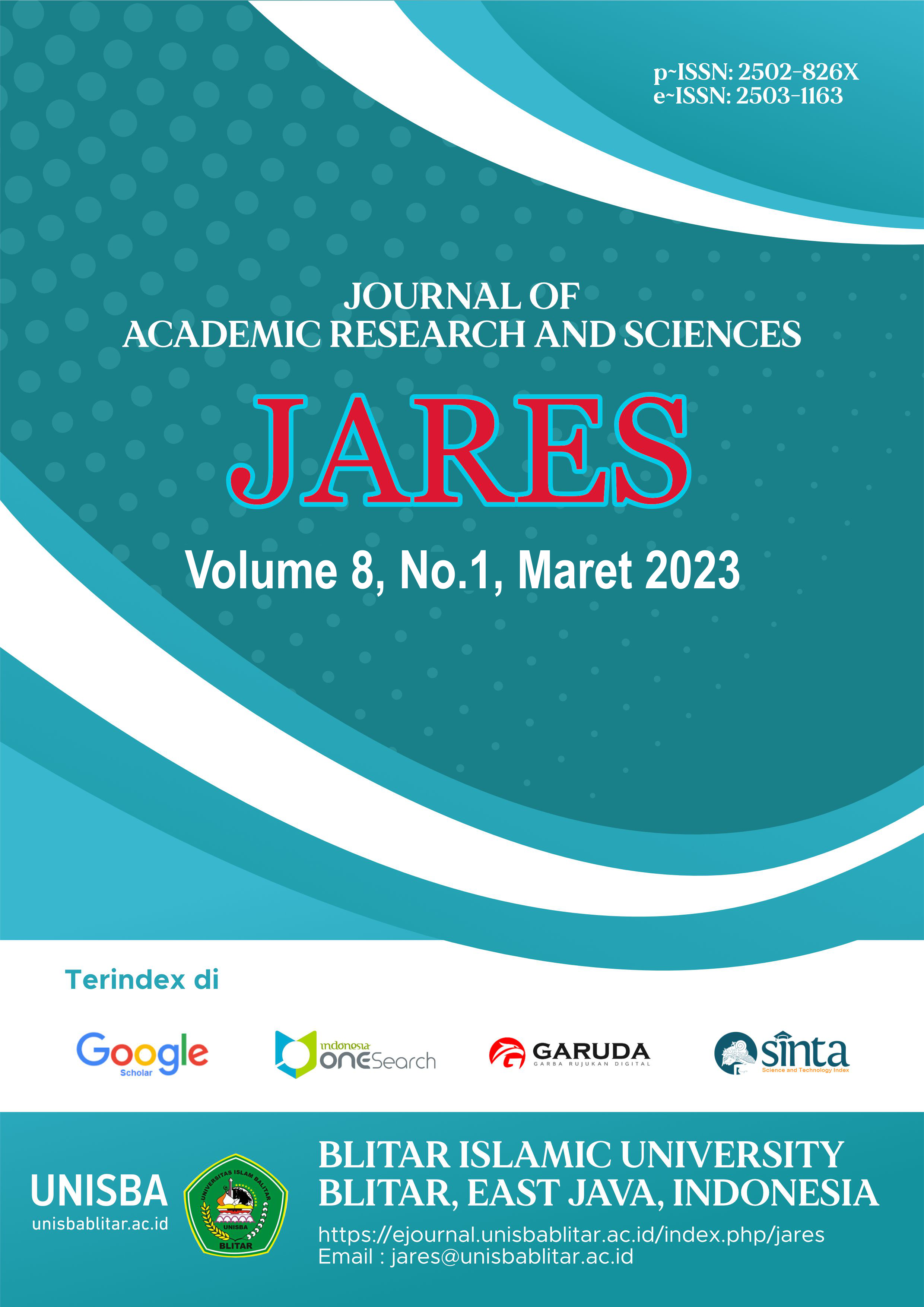SUPPLY CHAIN PERFORMANCE MEASUREMENT OF DOWNSTREAM WOODWORKING INDUSTRY
Abstract
People’s needs of wood toward increase. Along with the development of technology, the woodworking industry exists to balance the fulfilment of human needs of wood and to increase the value added of timber forest resources. The objective of this study is to identify the supply chain configuration and to measure the supply chain performance of the downstream woodworking industry. Metrics validation using the supply chain operation reference (SCOR) framework that is adjust to industry activities through discussions with stakeholders. Performance metrics are weighted using the Analytical Hierarchy Process (AHP). The result of the supply chain performance measurement of the downstream woodworking industry obtains a value 76.21 in the good category indicating that XYZ has achieved the target of 59%. 41% need to improve performance, namely 32% in the Average category, 5% in the Marginal category, and 4% in the Poor category.
Downloads
References
Asrol, M., Marimin, M., & Machfud, M. (2017). Supply chain performance measurement and improvement for sugarcane agro-industry. International Journal of Supply Chain Management, 6(3), 8-21.
Asrol, M., Yani, M., & Taira, E. (2021). Risk management for improving supply chain performance of sugarcane agroindustry. Industrial Engineering & Management Systems, 20(1), 9-26. https://doi.org/10.7232/iems.2021.20.1.9.
BES, A. P. M. S., Helmi, M., & Rianawati, F. (2021). Produktivitas Pemanenan Kayu Dengan Teknik Ril di PT. Wijaya Sentosa, Papua Barat. Jurnal Sylva Scienteae, 4(1), 36-43.
Bukhori, I. B., Widodo, K. H., & Ismoyowati, D. (2015). Evaluation of poultry supply chain performance in XYZ slaughtering house Yogyakarta using SCOR and AHP method. Agriculture and Agricultural Science Procedia, 3, 221-225.
Delipinar, G. E., & Kocaoglu, B. (2016). Using SCOR model to gain competitive advantage: A Literature review. Procedia-Social and Behavioral Sciences, 229, 398-406.
Gunasekaran, A., Patel, C., & McGaughey, R. E. (2004). A framework for supply chain performance measurement. International journal of production economics, 87(3), 333-347.
Jalali, M. S., Ghomi, S. F., & Rabbani, M. (2020). A System Dynamics Approach Towards Analysis of Hybrid Make-to-Stock/Make-to-Order Production Systems. Industrial Engineering & Management Systems, 19(1), 143-163.
Kulkarni, P. P., Kshire, S. S., & Chandratre, K. V. (2014) Productivity Improvement Through Lean Deployment & Work Study Methods. International Journal of Research in Engineering and Technology, 03, 429-434.
Maier, D. (2021). Building materials made of wood waste a solution to achieve the sustainable development goals. Materials, 14(24), 7638. https://doi.org/10.3390/ma14247638.
Maizi, H., Sastra, H. Y., & Arhami (2020). Mapping Upstream and Downstream Process in The Patchouli Oil Industry Using Supply Chain Operations Reference Model Version 12.0 (SCOR 12.0). IOP Conference Series: Materials Science and Engineering, 931(1), 012008. IOP Publishing. https://doi.org/10.1088/1757-899X/931/1/012008.
Mutaqin, D. J., Nurhayani, F. O., & Rahayu, N. H. (2022). Performa Industri Hutan Kayu dan Strategi Pemulihan Pascapandemi Covid-19. Bappenas Working Papers, 5(1), 48-62.
Ntabe, E. N., LeBel, L., Munson, A. D., & Santa-Eulalia, L. A. (2015). A systematic literature review of the supply chain operations reference (SCOR) model application with special attention to environmental issues. International Journal of Production Economics, 169, 310-332.
Peraturan Menteri Lingkungan Hidup dan Kehutanan Republik Indonesia Nomor P.9/Menlhk-II/2015 tentang Tata Cara Pemberian, Perluasan Areal Kerja dan Perpanjangan Izin Usaha Pemanfaatan Hasil Hutan Kayu dalam Hutan Alam, Izin Usaha Pemanfaatan Hasil Hutan Kayu Restorasi Ekosistem Atau Izin Usaha Pemanfaatan Hasil Hutan Kayu Hutan Tanaman Industri pada Hutan Produksi.
Peraturan Menteri Lingkungan Hidup dan Kehutanan Republik Indonesia Nomor P.13/Menlhk-II/2015 tentang Izin Usaha Industri Primer Hasil Hutan.
Peraturan Menteri Perindustrian Republik Indonesia Nomor 119/M-IND/PER/10/2009 tentang Peta Panduan (Road Map) Pengembangan Klaster Industri Furniture.
Purwanto, D. (2009). Analisa jenis limbah kayu pada industri pengolahan kayu di Kalimantan Selatan. Jurnal Riset Industri Hasil Hutan, 1(1), 14-20.
Reddy, K. J. M., Rao, A. N., & Krishnanand, L. (2019). A review on supply chain performance measurement systems. Procedia Manufacturing, 30, 40-47.
Singh, C. S., Soni, G., & Badhotiya, G. K. (2019). Performance indicators for supply chain resilience: review and conceptual framework. Journal of Industrial Engineering International, 15(1), 105-117.
Syafii, L. I., Thoyib, A., & Nimran, U. (2015). The role of corporate culture and employee motivation as a mediating variable of leadership style related with the employee performance (studies in Perum Perhutani). Procedia-Social and Behavioral Sciences, 211, 1142-1147.
Sutarman, I. W. (2016). Pemanfaatan limbah industri pengolahan kayu di kota Denpasar (studi kasus pada CV Aditya). Penelitian dan Aplikasi Sistem dan Teknik Industri, 10(1), 15-22.
Taouab, O., & Issor, Z. (2019). Firm performance: Definition and measurement models. European Scientific Journal, 15(1), 93-106.
Tokede, M.J., Mambay, B.V., Pangkali, L.B., & Mardiyadi, Z. (2013). Antara Opini dan Fakta, Kayu Merbau. Jenis Niagawi Hutan Tropika Papua Primadona yang Dikhawatirkan Punah. WWF Indonesia dan Universitas Negeri Papua.
Undang-undang Republik Indonesia Nomor 5 tahun 1967 tentang Ketentuan-ketentuan Pokok Kehutanan.
Usman, F. H. (2010). Kadar Air dan Stabilitas Dimensi Berdasarkan Suhu Pengeringan dan Jenis Kayu (Moisture Content and Dimension Stability Based on the Temperature of Dry Kiln and Wood Types). Jurnal Tengkawang, 1(2), 67-73.
Copyright (c) 2023 JARES (Journal of Academic Research and Sciences)

This work is licensed under a Creative Commons Attribution-ShareAlike 4.0 International License.
Authors who publish with this journal agree to the following terms:
- Copyright on any article is retained by the author(s).
- Author grant the journal, right of first publication with the work simultaneously licensed under a Creative Commons Attribution License that allows others to share the work with an acknowledgement of the work’s authorship and initial publication in this journal.
- Authors are able to enter into separate, additional contractual arrangements for the non-exclusive distribution of the journal’s published version of the work (e.g., post it to an institutional repository or publish it in a book), with an acknowledgement of its initial publication in this journal.
- Authors are permitted and encouraged to post their work online (e.g., in institutional repositories or on their website) prior to and during the submission process, as it can lead to productive exchanges, as well as earlier and greater citation of published work.
- The article and any associated published material is distributed under the Creative Commons Attribution-ShareAlike 4.0 International License







